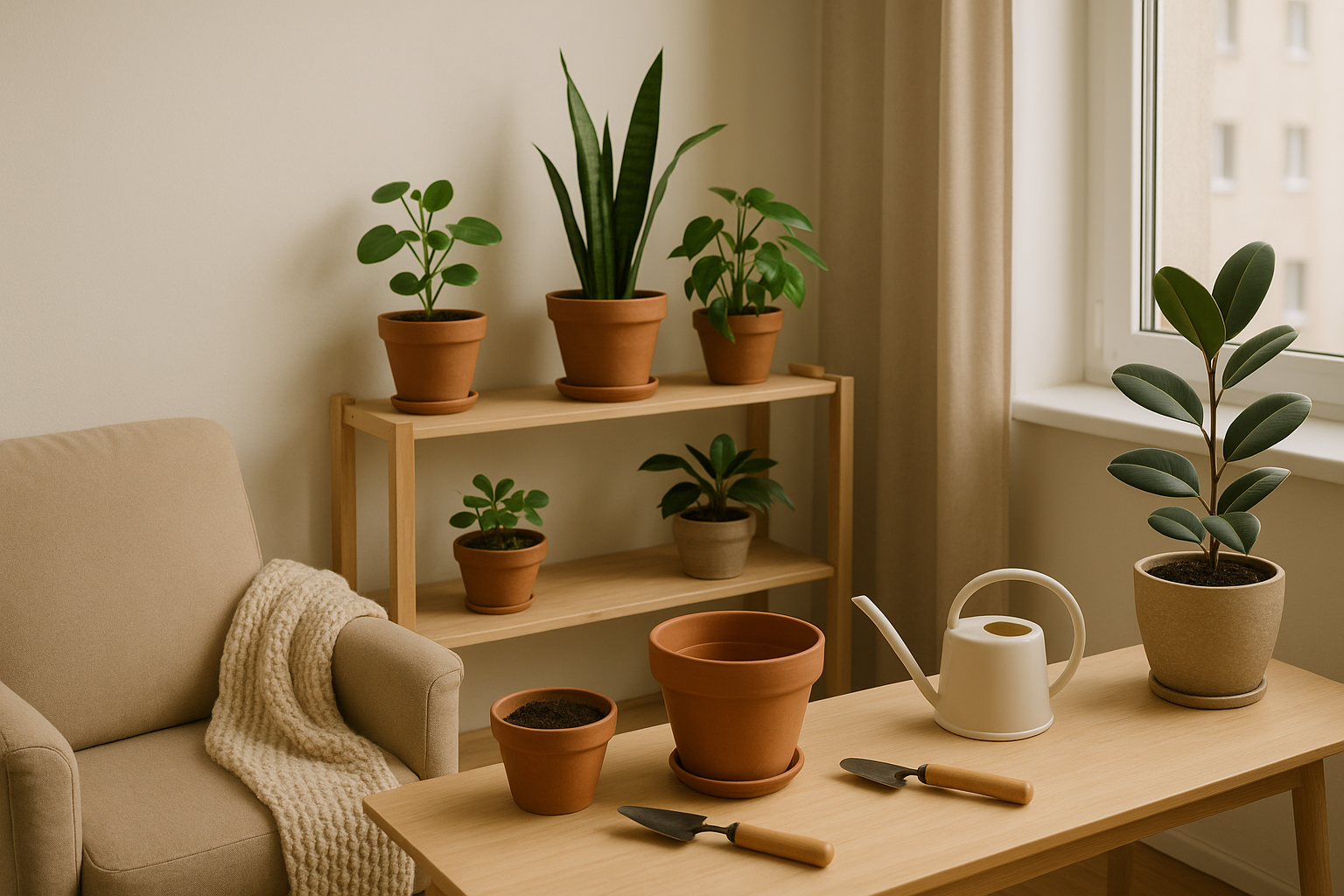Keeping apartment plants healthy and thriving doesn’t just depend on sunlight and water—it also requires consistency. Developing a routine tailored to your space and schedule is one of the best ways to ensure long-term plant success. In this article, you’ll learn how to create a simple, effective plant care routine that works perfectly in the context of small apartment living.
Why a Routine Matters
Without a consistent schedule, it’s easy to forget when you last watered your plant, whether it needs pruning, or if it’s getting enough light. A routine:
- Prevents over- or under-watering
- Helps you monitor plant health more easily
- Encourages better growth and fewer pests
- Makes plant care feel manageable, not overwhelming
Especially in small apartments, routines also help avoid clutter, keep your tools organized, and ensure plants get consistent attention.
Creating a routine also improves your awareness of how your plants respond to different seasons, changes in light, or even stress. The more consistent you are, the more your plants will reward you with steady, healthy growth.
Step 1: Take Inventory of Your Plants
Start by listing all your plants and writing down key details for each one. This helps you understand the unique needs of each species and tailor your care:
- Plant name (common and botanical, if known)
- Ideal watering frequency
- Light preferences (direct, indirect, low light)
- Feeding/fertilizing schedule
- Pruning or misting needs
- Pot size and type (drainage, material)
This inventory can be kept in a physical notebook or digitally using apps like Google Sheets, Trello, or a note-taking app.
Step 2: Group Plants by Needs
Once you’ve documented the essentials, group your plants based on similar care needs. This step is essential to simplify your routine.
Grouping categories:
- Watering groups: For example, succulents and cacti need far less frequent watering than ferns or peace lilies.
- Light groups: Place light-loving plants close to windows, and shade-tolerant ones in corners or hallways.
- Humidity groups: Mist-loving plants (like calatheas) do best grouped in bathrooms or on a tray with pebbles and water.
This way, you avoid having to remember each individual plant’s needs every day.
Step 3: Create a Weekly Schedule
Design a weekly plan that divides tasks across days, so you’re not overwhelmed. Instead of trying to care for all your plants at once, spread your responsibilities throughout the week.
Example routine:
- Monday: Water tropical or moisture-loving plants; mist foliage
- Tuesday: Check for pests, clean leaves with a damp cloth
- Wednesday: Water low-maintenance plants like succulents (if needed)
- Friday: Rotate plants to ensure even light exposure
- Sunday: Prune yellowing or dead leaves, fertilize as needed
This method helps you stay on top of care while keeping tasks manageable.
Step 4: Use Digital or Visual Reminders
Life gets busy. That’s why having reminders can keep you on track.
Helpful reminder options:
- Set alarms or calendar events on your phone
- Create a color-coded checklist on your fridge
- Use plant care apps (Planta, Vera, Greg, etc.) that notify you when it’s time to water or fertilize
Tracking your care digitally also allows you to log changes in plant health, soil moisture, and growth progress.
Step 5: Adjust Seasonally
Plants change their behavior with the seasons, and your routine should adapt too.
Spring/Summer:
- Faster growth means more watering and regular feeding
- Increase humidity by misting or grouping plants
- Repot if necessary during active growth periods
Fall/Winter:
- Plants enter a dormant phase, so reduce watering
- Stop fertilizing unless the plant is actively growing
- Move plants closer to windows due to shorter daylight hours
- Avoid cold drafts from windows or heating vents
Review and update your plant schedule every 3–4 months to account for seasonal changes.
Step 6: Designate a Plant Care Station
Having a dedicated space for plant care tools can streamline your routine, especially in small apartments where storage is limited.
What to include:
- A small watering can or spray bottle
- Scissors or pruning shears
- Moisture meter (optional but helpful)
- Microfiber cloths for leaf cleaning
- Organic fertilizer or compost pellets
- A small caddy or basket to store it all
Keep this kit in a closet, cabinet, or under the sink so it’s always accessible.
Step 7: Track Plant Progress
Observing your plants over time helps you fine-tune your care. Make it a habit to document:
- New growth
- Flowering cycles
- Changes in color or texture
- Pest signs or disease symptoms
Snap a photo each month or jot down quick notes. This tracking helps you spot issues early and gives you a sense of accomplishment as your plants flourish.
Troubleshooting Common Routine Problems
“I keep forgetting to water.”
Keep your most sensitive plants in high-traffic areas like your kitchen or desk to stay visually reminded.
“My routine feels overwhelming.”
Reduce your collection temporarily or focus on low-maintenance species like ZZ plants, snake plants, or pothos.
“Some plants thrive, others don’t.”
Reassess placement and light exposure. Even a slight change in distance from the window can affect plant performance.
“My space feels cluttered.”
Use tiered plant stands or hanging planters to keep things organized and visually clean.
Bonus Tip: Make It a Mindful Moment
Turn your plant routine into a moment of mindfulness. Play relaxing music, sip coffee while misting your ferns, or take five quiet minutes observing new growth. These tiny rituals help reduce stress and deepen your bond with your plants.
Final Thought: Build Habits, Not Perfection
A plant care routine doesn’t need to be complicated to be effective. By staying consistent and observant, even beginners can build healthy habits that allow plants to thrive in small apartments. Start simple, adjust with time, and enjoy the journey—because every thriving leaf is a result of your care and attention.
